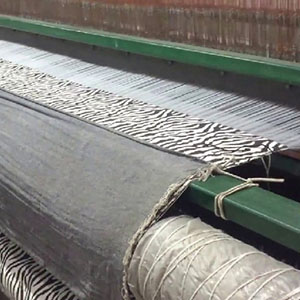
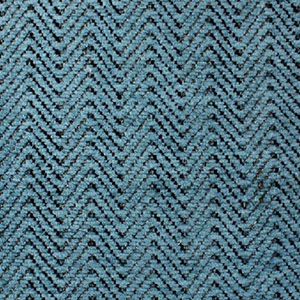
Broadloom Carpet, as the name implies, is woven on wide looms, which can either be power-driven automated looms or manual hand looms. The width is generally 13` – 16.5` (i.e. 4m – 5m), and is manufactured/ shipped in around 85` – 95` (i.e. 25m – 30m) long rolls. The machine-made broadloom carpet is commonly used for wall-to-wall carpeting in commercial applications, whereas handmade broadloom is used in residential applications. The manual broadloom carpet is considered premium, mainly because of its handmade nature and also for the innumerable interesting textures that can be developed in various yarns! Owing to the large size, production & handling is challenging, and meticulous workmanship with a fine eye for detail is required at every stage and, it`s our pleasure to offer you this as our specialty product!
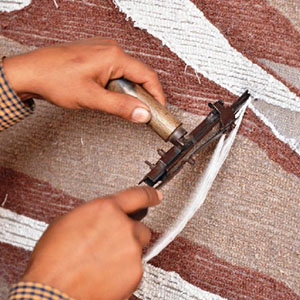
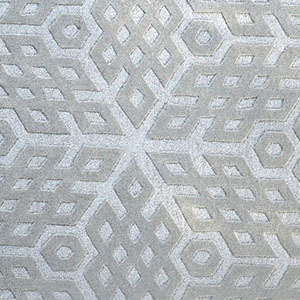
A hand tufted rug is typically a much higher-quality rug than one made by a machine, but, when compared to a hand-knotted rug meticulously created by an artisan, it is less durable and less valuable as this weaving technique is a little less cumbersome than the hand-knotted weaving technique. They aren`t completely unique works of art, but they are much closer than other weaves since it is created by a weaver, and not on a weaving or looming machine, without a human to guide the pattern or yarn. They are often made of wool, and, depending on the manufacturer and materials used, they can last for up to 20 years. Hand-tufted rugs aren`t made on a loom but are created with a tool called a tufting gun.
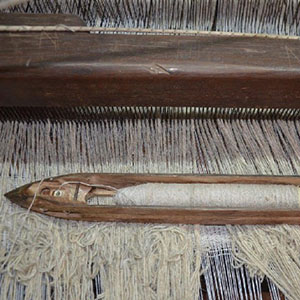
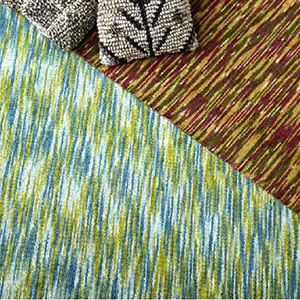
Weaving is an age old method of textile production in which two distinct sets of yarns or threads are interlaced at right angles to form a fabric or cloth, and the simple equipment that facilitates this process is called the `loom`. In this precise manual weaving technique, the motion of the handloom (vertical or horizontal) is operated by skilled human hands without using any source of energy like electricity. The longitudinal threads are called the `warp`, which forms the pile or “face” of the rug, and the lateral threads are the `weft`, which forms the base or “backing” of the rug. This range, even while maintaining a simple outlook can enliven any space with its engaging colors and plush patterns.
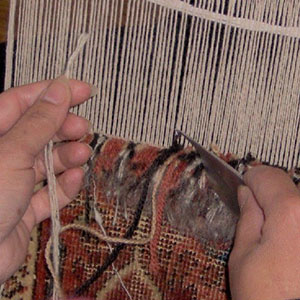
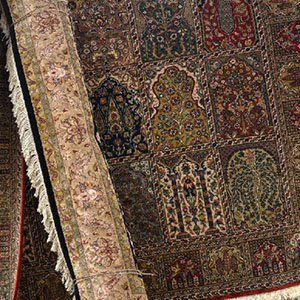
Hand-knotting is perhaps one of the oldest form & intricate weaving technique carried out by very skilled artisans where every single knot is tied manually by hand! For thousands of years, hand knotted carpets have meant to be the pinnacle of comfort, luxury, beauty & practicality in thousands of homes worldwide. Ever since it was introduced by the Mughals in India, this technique has flourished as an oriental art. An interesting fact is that the number of knots per square inch is directly proportional to the intricacy of the design and also its durability. Producing Hand-knotted rugs is time-consuming but they become crafts of admiration, items of possessions by people who value craftsmanship. They are priceless collectibles. Even hand-knotted rugs are classified into many categories like weaving rugs with Turkish knots involving symmetrical weaving of knots, Persian knots involve asymmetrical weaving of knots, Jufti knots are a combination of Turkish and Persian style and Spanish knot technique involves solo wrap symmetrical weaving. Hand-knotted rugs can withstand high traffic and last for generations.
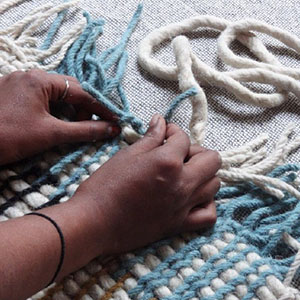
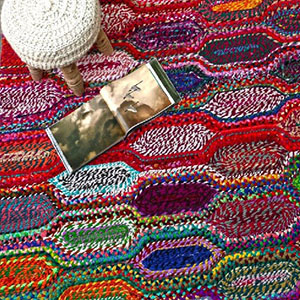
Coming to commercial existence only a few years ago, though a relatively new category, but now its gaining popularity gradually in the contemporary fashion markets. Unlike the wovens or tufteds or knotteds, we cannot assign/limit only one single manufacturing technique to this category. It can be a combination of various craft types like tufting, printing, hand binding, cutting, pasting, sewing, nail & thread art, braiding, smocking, heat stamping, laser-cut, embroidery, knitting etc etc. Can be rightly said here that creativity can be taken to unimaginable limits where the art of rug manufacturing gets a new form!
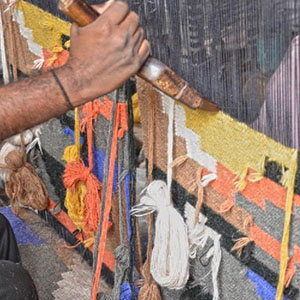
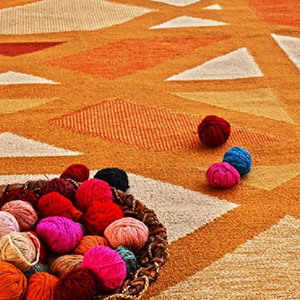
Punja weaving is a part of India`s glorious weaving tradition. This craft is used mostly for making light woven rugs, and it gets its iconic name from a metallic claw-like tool called `Punja` in the local dialect. This tool is a bit heavy and used for beating the weft threads in the warp so as to adjust them there, and the beating is directly proportional to the stability of the rug. Intricate designs which are not possible on pit-loom or hand-loom are possible to make in this technique.
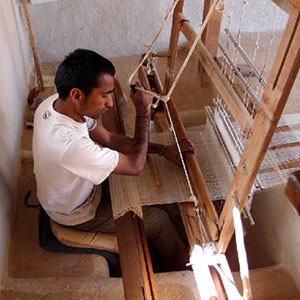
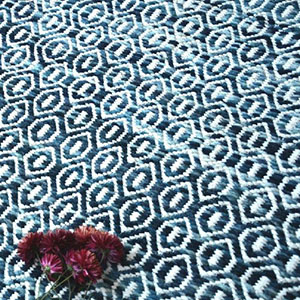
Our collection of flat-weave rugs is a perfect blending of contemporary designs and traditional craftsmanship. As the name suggests, `Pit Loom` is a type of loom which is fit over a pit where the artisan makes the rug through the use of pedals. In working, it simulates the handloom, the only difference is its size & height. It is used mainly for producing thin flat-weave rugs, these rugs do not have a pile, and they are often reversible (but can also produce chunky weaves as well as shaggy pile rugs). Pit-loom weaving is considered to be a better weaving as the fabric woven retains the character of the yarn and fabric.
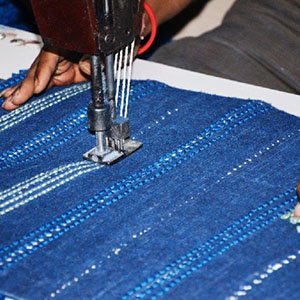
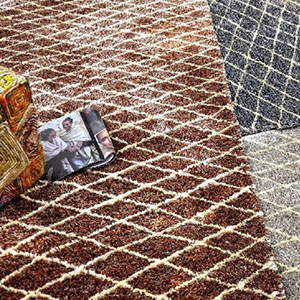
To cater to diverse requirements for more economical products & faster lead times, this technique has emerged to produce polyester yarn carpets and bathmats. It`s basically like the hand-tufting process with a change of using a modified sewing machine to do the tufting. Depending on the intricacy of the design, these tufting machines are available from single needle to upto 20 needles or more. Also, as it has a motor, the tufter has the freedom to regulate the speed of tufting, and the number of tufts per inch (which are mainly modified stitches). It can be operated by foot pedal or by the control terminal on the machine case.
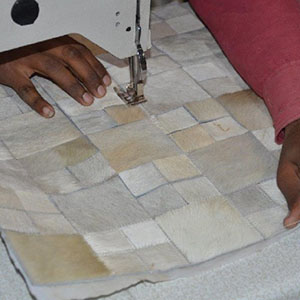
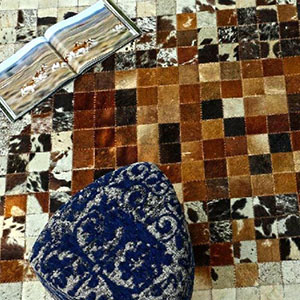
With the natural texture and warmth, our range of leather rugs & accessories add grandeur to the décor of any home. This is a premium category, primarily due to the high cost of the raw material i.e. the hide. Owing to the natural characteristic, the hides are carefully selected, and the elements are cut out with a clicking press and then hand-sewn by very skilled craftsmen, to produce some of the most luxurious & inherently durable products!
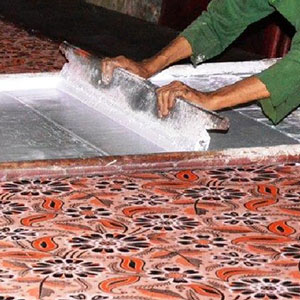
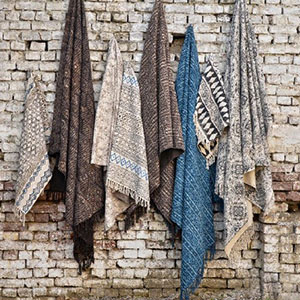
Screen printing is a form of Stencilling Art that originated many centuries ago in Asia and later spread over to the western world. The screen (generally of polyester or other fine material) is made of a piece of mesh stretched over a frame. A stencil is formed by blocking off parts of the screen in the negative image of the design to be printed; that is, the open spaces are where the ink will appear on the substrate. In this technique, the mesh is used to transfer ink onto a substrate, except in areas made impermeable to the ink by a blocking the stencil. A blade or Squeegee is moved across the screen to fill the open mesh apertures with ink, and a reverse stroke then causes the screen to touch the substrate momentarily along a line of contact. This causes the ink to wet the substrate and be pulled out of the mesh apertures as the screen springs back after the blade has passed. As the screen rebounds away from the substrate, the ink remains on the substrate. It is also known as Silk-Screen, Screen, Serigraphy or Serigraph Printing. One color is printed at a time, so several screens can be used to produce a multi-colored image or design. Over the past few years, the usage of this technique on several handmade carpets & rugs has taken the art to a different level by creating value added unique products at very reasonable pricing!
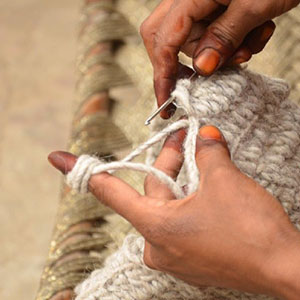
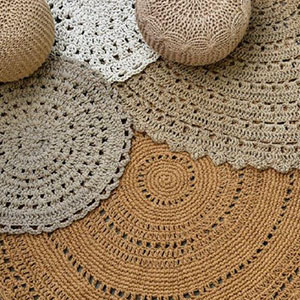
Knitted textiles survive from early periods but the first substantive evidence of crocheted fabric relates to its appearance in Europe during the 19th century. Crochet is a process of creating a fabric by interlocking loops of yarn, thread or strands of other materials using a crochet hook. The name is derived from the French term “crochet”, which means a small hook (made of either metal, wood or plastic). The final products manufactured with these two techniques look similar, but one salient difference is that – In most Crochet (except the Tunisian crochet and Broomstick lace), the artisan usually has only one live stitch on the hook, while in Knitting it keeps a large number of stitches open simultaneously at a time. Another obvious difference is that crochet uses one hook while much knitting uses two needles. Although Crochet & Knitting is mostly used for making smaller items, but over the past few years, this craft aided by taste & fashion, has evolved to produce Rugs!
Azara Home is a young startup based in India and is trading and manufacturing both handmade and machine made rugs. We source most of our products directly from the manufacturers and articians. Read More..
Copyright 2020 - AZARAHome - All Rights Reserved